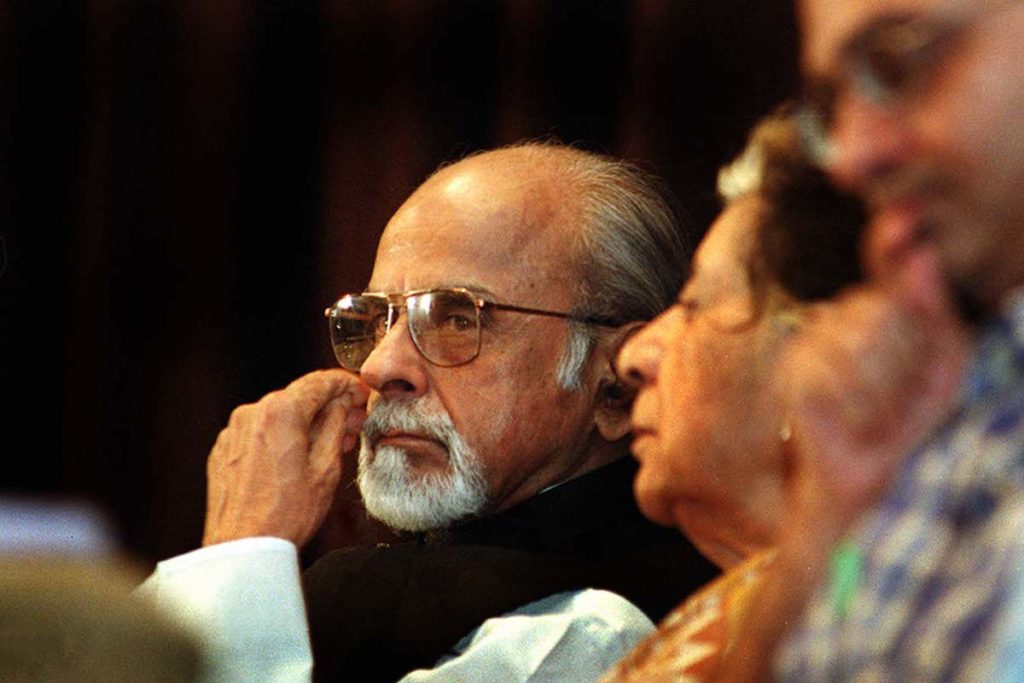History teaches us that the falling apart of empires not only creates many successor states but the relation between those states and their neighbours are often marred by conflicts, conflicts that include quarrels about who is the rightful successor of the previous empire and multiple border conflicts. Furthermore, the successor states have to find for themselves a proper identity and self understanding that certainly would impact the relations with others in the region. That was true for the states that were created after the fall of the ottoman empire that until today causes a volatile situation in the Middle east that can be used by others at will. It is also true for the fall of the British empire in South Asia and beyond where the British had created a network or vassals, influences and footprints.
Before the advent of the British the Moghul empire had been going down; Its remnants were finally destroyed by the east India company (EIC) in the first half of the 17th century. At the time of their arrival India had a population of 150 million, one fifth of the world population, and it was producing a quarter of global manufacturing. India was the world’s industrial powerhouse and the global leader of textile production. When the British left India was not any more famous for its mousse lines but for its hunger epidemics that killed millions.
That the colonial border limitation in the north-east would create problems for the newly independent states was recognized by the Bengalis themselves. As we have been elaborating in a special chapter of our book on 1971 ‘Blood on different shades of Green’, Bengali members of the congress and the Muslim league argued for and promoted the idea of a united Bengal that would have included Assam and the north east. Quaid-e-Azam had also given his consent for a united Bengal rather than for its division but this was rebuked by the congress and the British. Had this historic opportunity not been missed at that time, we would have today apart from an independent India (minus Bengal) and an independent (West) Pakistan an AESSA like state in a federal or confederal form and have avoided a lot of warfare and misery for the people of the region.
But with that opportunity missed the end of British rule was not the end of misery for the subcontinent. The post colonial landscape of states and borders that arose on the debris of British India is far from perfect or even just from acceptable. Look at it it is marred by multiple conflicts that all have their roots in the colonial empire drawing of borders and connected policies. But changing the status quo so as to resolve those conflicts would imply to change borders and rearrange territories which represents an unsurmountable hurdle in a postcolonial surrounding based on and reminiscent of the glories of anti colonial struggles that had taken the form of Indian, Bengali, Muslim and multiple other nationalisms. Changing borders until today means war and that can’t be in anybody’s interest.
But there can also be no doubt that this unfortunate post-colonial political landscape is not only bearing the constant threat of war in itself, it is also withholding the economic, cultural and intellectual development of the post colonial nations. All countries of South Asia alike have been marred by civil and/or international wars and have been left strangled in their progress. Starting from the Kashmir conflict, the Indo Pakistani wars of 1965, 1971, Kargil 1999 apart from a low intensity war that is ongoing along the Indian border Afghanistan, Sri Lanka, Bangladesh, Nepal, Bhutan, china all are marred in border and sovereignty disputes so much so that the subcontinent’s economic and social performance is dismal, regional organizations like Saarc are unable to perform and intra regional trade is negligible resulting in poverty and stunted socio economic growth.
The largest country and economy in the region, India from its very independence in 1947 has pursued an aggressive policy in South Asia based on its claim to be the only rightful successor state of the British empire in the region having inherited its imperial power and thus entitled to re-erect the past glory of pre Islamic Indian empires. The claim over Kashmir regardless of the will of the Kashmiri people and its attempted annexation through constitutional amendment in 2019, the trampling over the sovereignty of smaller states like Nepal, Bhutan, Sikkim (“democratically” annexed in 1975 by India though a constitutional amendment), its interference in Sri Lanka during the civil war and in east Pakistan in 1971 are examples of India’s hegemonistic design in the region. But India, being a subcontinent rather than a nation, has handled its own population no better. Posing as the ‘largest democracy in the world’ it has trampled upon the rights for autonomy and political participation of its own people. Anti Muslim policies based on the fiction that Muslims are not indigenous and alien to India have characterized Indian politics from early on. Tensions between Delhi and South India are another feature.
But a central spot of unrest has been the north-east of India, a territory called ‘Seven sisters’ (or actually eight) comprising of Arunachal Pradesh (partly claimed by china), Assam, Manipur, Meghalaya, Mizoram, Nagaland, Sikkim (annexed in 1975) and Tripura are bordering china (Tibet), Bangladesh, Nepal Bhutan and Myanmar and are connected to subcontinental India only by the Sigurd corridor, also called ‘chicken neck’, a narrow corridor of only 22 km width. Consequently, the population of that territory has not much in common with subcontinental India, but is related culturally to the surrounding ethnicities of east and South east Asia. The trouble under Indian rule has been exactly that: Delhi’s interference in a culture that is quite different from the rest of India, the ongoing attempts of ‘Sanskritization’ including introduction of caste system and primacy of upper castes, language policy that neglects and at times suppresses local languages and dialects and the imposition upon the tribal population of the region of a political structure and culture that is alien to them.
Tackling the multiple conflicts internal as well as external at this point is an uphill task that certainly would imply major political and border changes which is why it is at the current stage rather ‘Khayali pilaw’ and no immediate action plan. But imagination should be allowed when it takes the sorrows of people into account. Thus, the idea forwarded here is one of forming even belatedly an ‘association of eastern States of South Asia’ (AESSA) comprising of culturally close territories of north east India, Bangladesh, Nepal, Bhutan the political status of which would have to be negotiated between the states to which the territory belongs today.
Recognizing this dilemma, in 2001 India created a Ministry of Development of north eastern region that has been tasked to further economic development and remove the infrastructural bottlenecks that the region is facing. A ‘look east’ connectivity project is under way aimed at improving connectivity to eastern and South east Asian neighbours. That is a good beginning but not enough, because it does not remove the tight political grip of Delhi and its cultural interference’s into the region.

Quite some time ago former Indian PM Gujral with his ‘Gujral doctrine’ developed a idea close to AESSA. This doctrine proposed clubbing together the complementary economies with the geographical proximities of the eastern States of South Asia IE. Bangladesh, Nepal and Bhutan with the north eastern territory of India excluding Bengal. The logic behind PM IK Gujral’s arguments was their natural territorial, cultural and ethnic cohesion rather than any artificial re-configuration. Nepal and Bhutan’s hydel possibilities would provide Bangladesh with access to cheap electricity, at the same time the landlocked eastern states of India would be best served by using the port cities of Chittagong and chalna with direct road rail access.
To carry Gujral’s proposal to its logical conclusion, i.e in order to let the states which have commonality in culture, economics and communications come together in regional grouping due to accident of geography, the mentioned association of eastern States of South Asia (AESSA) would be the logical consequence, with an economically resurgent Bangladesh as the hub country and having the independent republics of West Bengal, Nepal, Bhutan, Sikkim, Gorkhaland, Bodoland, Meghalaya, Assam, Tripura, Nagaland, Mizoram, Manipur, the north east frontier agency (NEFA), etc. As a viable confederation. That would mean a break-up of India as it exists today but these countries would at least have more cultural and political affinity than the economic and communications affinity at present with India.
For such a vision to be implemented it needs a conducive political situation that is based on cooperation and equality rather than on confrontation aimed at grabbing more territory, might and influence to suppress and exploit other countries. The recent Indo Chinese stand off and other features of an aggressive regional policy of the current Modi government of India are excluding such a project right now. But the seeds for it have been sown and the time of its fruition may come sooner than expected.
Contributed by:

Dr. Bettina Robotka
Dr. Bettina robotka, former Professor of South Asian Studies, Humboldt university, Berlin.




